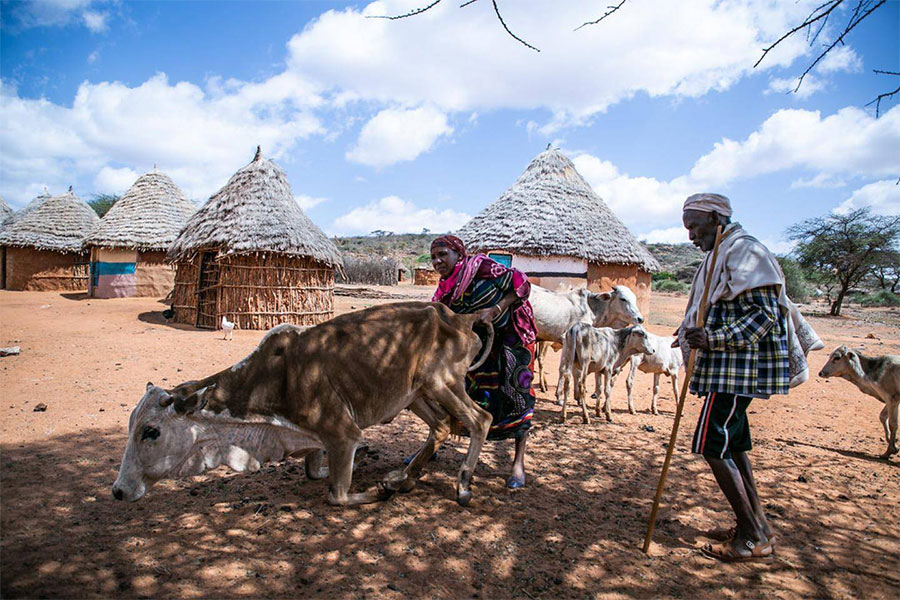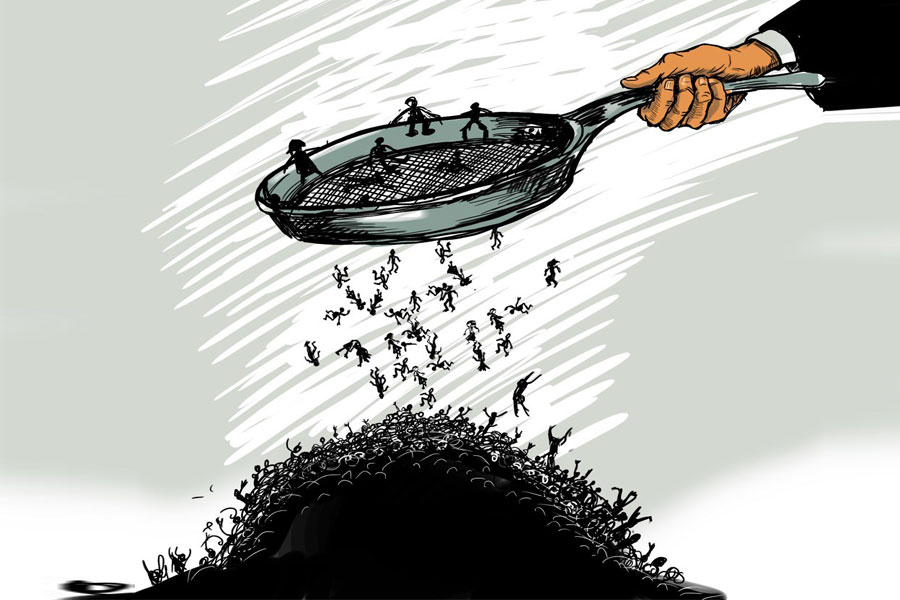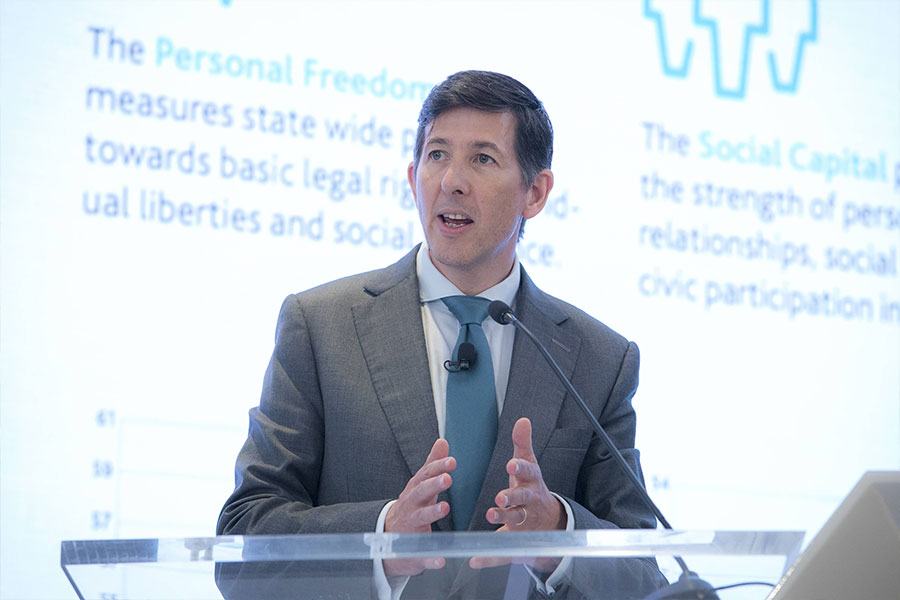
My Opinion | May 04,2019
Mar 4 , 2023.
Once again, Ethiopia has claimed international attention in the past few weeks for reasons that are rather unsavoury. A few weeks after the federal authority's declaration the country has joined a list of countries exporting wheat, the depressing news that nearly one million citizens face the prospect of famine in the southern and south-eastern parts has overwhelmed the airwaves.
The irony could not be lost on Ethiopia’s authorities. Sending trucks loaded with wheat to neighbouring Kenya, passing through the Borena Zone, where millions of cattle have died of drought, should be a travesty. Well-meaning individuals and groups, however, have been dispatching food assistance to residents in the Borena Zone of the Oromia Regional State, compelling Addis Abeba’s Mayor, Adanech Abiebie, to donate over 100 million Br in somewhat haphazard relief efforts.
The situation could be bleaker.
Several United Nations agencies working in disaster response and relief efforts have warned that the current drought engulfing the Horn of Africa region could be far worse than reported a decade ago or the one in 2016-17. Failing to see rainy seasons for five consecutive years since 2018, the prevailing drought is more severe and could stay much longer. Last seen four decades ago, this drought is expected to impact 36.5 million people in Ethiopia, Kenya and Somalia. It is feared to expose no less than 20 million of them to “acute food insecurity,” a lexicon used by the aid community (the United Nations taking the lead) to avoid the wrath of states unhappy with the declaration of “famine.”
Famine occurs when a large number of the population loses access to food and essential needs vital for existence, such as water, shelter, and healthcare.
Ironically, the decision to declare a famine in a certain country became a politically charged international affair, involving conflicting interests and priorities. In a world where growing demands on global resources for emergencies far exceed what is available, these interests fight to balance the need for humanitarian assistance with the potential political and economic consequences of declaring a famine.
The United Nations office coordinating humanitarian operations, OHCA, estimates the three countries need close to 5.9 billion dollars to spend in helping their affected populations. The international aid community has raised close to 40pc of these resources, where both the need and the gap are much higher in Ethiopia of the three countries.
Ethiopian authorities have yet to declare a famine. They may probably not, considering their reluctance due to concerns about negative publicity and “potential damage” to the country’s reputation as one of “the fastest growing economies in the continent.” They may find a false sense of comfort in the snarl of technical terminologies where humanitarian experts toy around the four stages of food insecurity: food secure, food insecure, acute food and livelihood crisis, and humanitarian emergencies.
Not surprisingly, the tragedy unfolding in Borena Zone is characterized by the authorities as an “acute food and livelihood crisis” where a significant reduction in food availability led to malnutrition, starvation, and increased mortality.
It would be a mistake for Ethiopia’s leaders to fail to grant the level of attention and response to the developing famine. The UN agencies estimate nearly 20 million people, including the 4.6 million internally displaced, require emergency food assistance that will cost the federal government and the world almost four billion dollars. Not even half of this amount has been raised so far.
Failing to overcome the prospect and consequences of famine would only make them guilty in history’s verdict, as many of their predecessors were. Reading a bit of history would inform them that famine is a product of political and leadership failure, while drought could result from nature failing humanity. Nature will not take the blame for failing citizens dying of hunger. It will be Ethiopia’s leaders.
Hardly anyone claims a foremost authority on this subject than Amartya Sen, the Nobel laureate economist, who has written extensively on the causes of famines. In an article he published in 1981 headlined, “Poverty and Famines: An Essay on Entitlement and Deprivation,” he challenged the prevailing thought that food shortages caused famines.
Sen illustrated that the inability of people to access food due to unequal entitlements was behind the death of hunger, where food production is not significantly reduced. His conclusion came from observing the Ethiopian famine of 1973-74, where widespread poverty and inequalities in accessing food meant that many people could not get the food they needed to survive. Sen’s indictment of Ethiopia’s leaders was that the famine that claimed the lives of over 200,000 people was political and economic.
In another article he published five years later headlined, “Social Choice Theory, Development Economics, and Ethics,” Sen concluded lack of effective government actions, as well as dependence on foreign aid and investments, which prioritized export-oriented agriculture over local food production, exacerbated the famine in the mid-1970s. After decades of work on the nexus between drought and famine in India and Ethiopia, Sen’s 1999 book, “Development as Freedom,” concluded that famine is not simply a natural disaster but a political and social phenomenon that results from the failure of institutions and policies to ensure that people have the resources and freedoms they need to meet their basic needs.
Indeed, Sen is not without his critics, such as Thomas Malthus, a classical economist who attributed population growth to famine; Robert Lucas, a prominent economist who downplays social and economic factors as major causes of famine; and, William Easterly, a development economist who favours market forces and private entrepreneurship to overcome poverty effectively.
These voices want to recognize the complexities of the causes of famine with broader social and economic structures, individual and community agency, and the diversity of causes of famine. They criticized Sen for oversimplifying the complex causes of famine, ignoring multiple interrelated causes, including environmental factors, economic conditions, and cultural practices. They challenge his assertions that famine does not occur in every region or country with weak political and leadership systems. The great famines in the former Soviet Union during the Holodomor or China’s “Great Leap Forward” occurred when these countries had strong states that centralized power.
The many communities in Ethiopia that mobilized and shared resources and provided mutual aid in the mid-1980s, despite the failures of the government and international aid organizations, are used as evidence to counter Sen’s theory and for ignoring the agency of individuals in responding to famine.
However, Sen’s theory that the Ethiopian famine of 1984-85, which resulted in the deaths of over one million people, was caused mainly by the Ethiopian government’s policies of resettlement and collectivization was difficult to dismiss.
It should have significant implications for contemporary policymakers and political leaders in preventing famines, which require more than responding to natural disasters or providing aid, as is evident today. Overcoming famine needs political and institutional reforms that promote good governance, participation and accountability. Where leaders are not accountable for their inactions and omissions, as much as they ought to be held responsible for their actions, hundreds of thousands of lives could be lost. This can and should be avoidable.
PUBLISHED ON
Mar 04,2023 [ VOL
23 , NO
1192]

My Opinion | May 04,2019

Viewpoints | Apr 15,2023

My Opinion | May 08,2021

Agenda | Dec 19,2018

Agenda | Jan 29,2022

Editorial | Feb 04,2023

Commentaries | Jun 19,2021

Editorial | Jan 07,2023

My Opinion | Jun 20,2020

Exclusive Interviews | Oct 09,2021

Photo Gallery | 180326 Views | May 06,2019

Photo Gallery | 170523 Views | Apr 26,2019

Photo Gallery | 161557 Views | Oct 06,2021

My Opinion | 137274 Views | Aug 14,2021

Dec 22 , 2024 . By TIZITA SHEWAFERAW
Charged with transforming colossal state-owned enterprises into modern and competitiv...

Aug 18 , 2024 . By AKSAH ITALO
Although predictable Yonas Zerihun's job in the ride-hailing service is not immune to...

Jul 28 , 2024 . By TIZITA SHEWAFERAW
Unhabitual, perhaps too many, Samuel Gebreyohannes, 38, used to occasionally enjoy a couple of beers at breakfast. However, he recently swit...

Jul 13 , 2024 . By AKSAH ITALO
Investors who rely on tractors, trucks, and field vehicles for commuting, transporting commodities, and f...

Nov 2 , 2025
The National Bank of Ethiopia (NBE) has scrapped the credit-growth ceiling that had s...

Nov 2 , 2025 . By SURAFEL MULUGETA
The burgeoning data mining industry is struggling with mounting concerns following th...

Nov 2 , 2025 . By YITBAREK GETACHEW
Berhan Bank has chosen a different route in its pursuit of a new headquarters, opting for a transitional building instea...

Nov 2 , 2025 . By BEZAWIT HULUAGER
Nib International Bank S.C. has found itself at the epicentre of a severe governance...